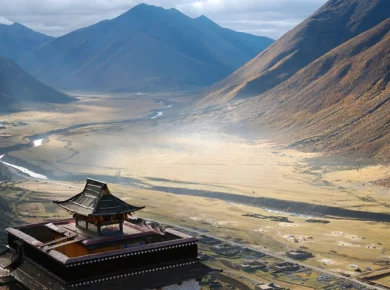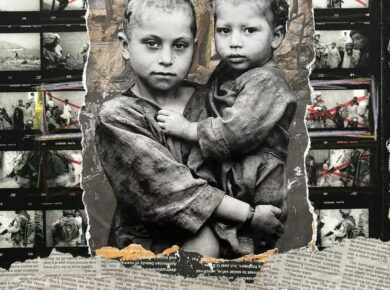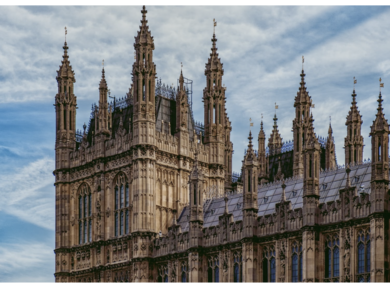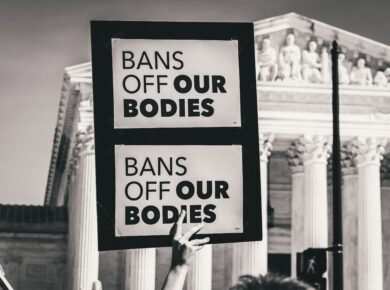Disclaimer: This blog post solely reflects the opinion of the authors and should not be taken to represent the general views of IPPR’s management/ editorial team or those of fellow authors.
Since 2003, Darfur has been the site of ongoing armed conflict between the Sudanese government and rebel groups. The conflict has since been characterised by sporadic periods of immense violence and reports of crimes against humanity committed by the government against civilian populations, primarily targeting non-Arabs. Following decades of perceived oppression by the Sudanese government, rebel groups launched an insurrection, to which the government retaliated through supporting Arab paramilitary groups to repress the uprising. In particular, the Janjaweed became the most notorious of the state-backed militias, committing mass killings and rapes, predominantly targeting an ethnically African demographic in Darfur. While atrocities were committed by both sides of the conflict, the number of casualties was disproportionate, with Darfur’s non-Arab population suffering the most intense violence. It was due to this that the conflict captured major international attention in the mid-2000s following media reports of ethnic cleansing perpetrated by the oppressive Sudanese government. The International Criminal Court has indicted several Sudanese officials, including President Omar al-Bashir for crimes against humanity, rape, forced transfer, and torture. As of 2021, the UN estimates that over 300,000 have been killed in Darfur, and around 3 million have been displaced (Tubiana, 2021). Although the gradual depreciation of the conflict saw international media coverage dwindle, the conflict is far from over. Despite the 2019 ouster of Sudanese president Omar al-Bashir, violence in the region still continues. Since the beginning of 2020, attacks by government-backed militias have killed hundreds of Darfuris, and nearly 250,000 people were displaced following a flare-up of the conflict between January and April of 2021 (ibid). Although the Sudanese government promised a peace process following al-Bashir’s ouster, the political transition process has since led to a re-escalation of the conflict.
However, whether or not the crimes perpetrated by the Sudanese government constitute “genocide” has been a topic of significant debate. There have been two important official verdicts on the presence of genocide in Darfur:
1) The United States asserts that Darfur is the site of uinambigious, ongoing genocide, perpetrated by the Sudanese government against Darfur’s non-Arab population. This verdict was declared by the US House of Representatives on June 24, 2004. (Hamilton, 2011)
2) The United Nations gives a more ambiguous depiction of the conflict, eventually concluding that “the Government of the Sudan had not pursued a policy of Genocide”, although it found that government violence amounted to “crimes against humanity”. (International Commission of Inquiry on Darfur, 2004)
As Article II the 1948 Genoide Convention states: Genocide means any of the following acts committed with intent to destroy, in whole or in part, a national, ethnic, racial, or religious group, as such:
(a) Killing members of the group;
(b) Causing serious bodily or mental harm to members of the group;
(c) Deliberately inflicting on the group conditions of life calculated to bring about its physical destruction in whole or in part;
(d) Imposing measures intended to prevent births within a group;
(e) Forcibly transferring children of the group to another group.
While the crimes committed in Darfur may satisfy many of the stated acts, the key clause is the “intent to destroy”. In other words, genocidal intent is essential in classifying crimes against humanity as genocide, which the UN Commision on Darfur were unable to prove. Regardless, the commission highlighted three egregious violations of international law: disproportionate response, conducting violence on a widespread and systematic basis, and targeting entire groups (albeit without the intention to eliminate them as groups). However, the findings of the UN commission on Darfur bear some similarity to the crimes reported in the US occupation of Iraq, with “contractors” perpetrating egregious violence against civilian populations, similarly to how government-backed “mercenaries” such as the Janjaweed perpetrated most of the violence in Darfur. If the crimes in Darfur were to be classified as genocide, many other instances of extreme violence would also be considered as such.
Furthermore, states are often reluctant to declare genocide due to Article I stating: “The Contracting Parties confirm that genocide, whether committed in time of peace or in time of war, is a crime under international law which they undertake to prevent and to punish.” This obligation to act results in states witholding from classifying war crimes as “genocide”, as doing so would legally impel them to intervene, which may misalign with their general strategic interests.
It can be acknowledged that the policies undertaken by the Sudanese government have been undeniably repressive. Prior to an attack on government headquarters in the Jebel Marra district in 2003 by the Darfur Liberation Front, triggering the civil war, the Sudanese government had been accused of repeated human rights violations since the beginning of al-Bashir’s tenure as president. Since early 1991, the Sudanese government has been accused of Arab apartheid, carrying out segragation policies excluding non-Arabs from political processes. This repression is central to the causation and nature of the Darfur conflict, as it reduces societal support, thereby intensifying dissident activity. This aligns with Joseph K. Young’s theory, arguing that the level of repression is a key determinant in a state’s propensity for civil war (Young, 2012). In particular, targeted repression against Darfur’s non-Arab minority has attracted claims of genocide, which legitimises humanitarian intervention to prevent further violence. The justification of interventionist policy is popularly debated; however, precedent to intervene in prevention of genocide was established by NATO’s airstrikes in Kosovo in 1998-99, which the Independent International Commission on Kosovo ruled as “illegal but justified”, as they halted further atrocities from being committed (IICK, 1999). This same logic has been applied to justify intervention in Iraq and Libya, where “liberating” citizens from an oppressive government and preventing atrocities has been given as a pretext for NATO intervention, from which intervening states have reaped strategic and resource benefits.
Many prominent journalists and media commentators have called for intervention. For example, New York Times columnist Nicholas Kristoph heavily advocated intervention in Darfur, writing “The killings are being orchestrated by the Arab-dominated Sudanese government, and the victims are non-Arabs.” (2004) In reality, the line between these groups is not clearly distinct. Both of these labels are blanket terms which have vastly differing meanings. For instance, the term “Arab” is often a pejorative in the region, referring to “uncouth” lifestyles of nomads in Darfur. Its second meaning is linguistic, to describe those who speak Arabic. Thirdly, it can refer to those who are “privileged and exclusive”, descending from aristocracy (Mamdani, 2007). Certainly, the ethnic divide in the region has intensified the conflict; disputes over land rights between Arab pastoralists and African farmers began over a century earlier, leading to sporadic conflict between the two groups. However, emphasizing Arab-African conflict can overlook the underlying resource dimension to this conflict; as Suliman asserts, “The skirmishes were about resources; even the conflicts were about resources. The war, however, has transformed into one about identity” (2008, p.1). The oversimplification of the conflict as one wherein Arabs oppress non-Arabs is a dangerous narrative pushed to justify foreign intervention.
The reduction of complex issues into simple narratives in which oppressors and victims are easily distinguishable helps to propagate the doctrine of “humanitarian intervention”, whereby powerful countries can militarily intervene and put an end to the atrocities. By fixating on race as a motive for gruesome atrocities, this approach obscures the complexities of political violence and appeals to the emotion of readers, fostering popular support for intervention.
This begs the question of why many of those who oppose intervention in the Middle East supported intervention in Darfur. One possible theory is that Darfur is not a region in which the United States and its allies have vested interests or ulterior motives. It possesses neither easily extractable resources nor emergent international terrorist groups, which may ensure that Western intervention is swifter and less exploitative. However, this view is less plausible considering the lack of international media coverage of the ongoing Kivu conflict, which has a far higher death toll and similar human rights abuses (Mamdani, 2007). A possible explanation for the lack of attention paid to the Congo is due to Hema and Lendu militias, which have perpetrated most of the violence in the region, having been indirectly funded and trained by the United States through their proxies Rwanda and Uganda (ibid). In addition, the Kivu conflict is an example of African-on-African violence, instead of Arab-on-African violence which aligns with the preferred media narrative which justifies intervention in the Arab world. Hence, while intervention in Darfur may not be strategically beneficial to the United States and its allies, allegations of genocide by the Sudanese Arab government integrate seamlessly into the “War on Terror” narrative, which is required to maintain support for intervention in the Middle East.
Ultimately, peace cannot be solely achieved through external humanitarian intervention, but must be built upon negotiation, concession, and reconciliation. Mamdani draws parallels between calls for humanitarian intervention and justifications for colonialism and imperialism. Nineteenth century colonial officers described instances of “barbarity” committed by native populations in order to legitimise occupation. Gross depictions of atrocities committed by native populations have often provided a moral pretext for “civilizing missions” carried out by colonial powers to occupy and exploit territories. In the case of Darfur, intervention is simply impractical and strategically unviable for the US and its allies. However, depictions of one-sided violence, even genocide, committed by an Arab government help justify intervention in areas where Western powers have important security and strategic interests.
Bibliography
Hamilton, R., 2011. Inside Colin Powell’s Decision to Declare Genocide in Darfur. [online] The Atlantic. Available at:







